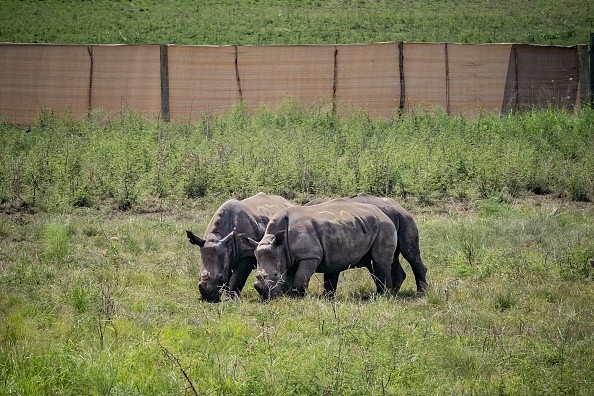BioRescue, a global collaboration, is working to create artificial egg cells from stem cells in order to prevent the extinction of the northern white rhino.
In scientific reports, a team led by MDC's Sebastian Diecke and Micha Drukker of Leiden University stated that they are one step closer to attaining this aim.
Fatu and Najin are the world's only two northern white rhinos, and they are both females.
As a result, these subspecies can no longer breed naturally, and extinction appears to be a certain conclusion.
The BioRescue group, on the other hand, is fighting against the clock to guarantee that the northern white rhino does not become extinct.
The sad story of the death of the last male white rhino

According to CNN, Sudan, the species' only male, died of natural causes in March 2018. Suni, another male, died in 2014.
Sperm from both guys was cryogenically preserved in the hope that technology might progress enough to allow it to be used in procreation eventually.
According to Cesare Galli of Avantea, an Italian laboratory that specializes in animal reproduction, yesterday's procedure implies that creating a northern white rhino embryo in vitro, which has never been done before, is now a practical reality for the first time.
The eggs were sent from Kenya to Italy, where the Avantea laboratory would fertilize the eggs in vitro with sperm from the reduced males.
At the San Diego Zoo Safari Park in July, a southern white rhino gave birth to a newborn male.
According to the zoo, it was the first assisted reproduction birth of the species in North America.
The birth of the newborn rhino was extremely significant since it demonstrated that artificial insemination, in vitro fertilization, and embryo transfer were all successful.
Once the procedure has been refined in southern white rhinos, it may be used to other endangered species.
On the one hand, Ol Pejeta is unhappy that the world now possesses just two northern white rhinos, a testament to the voracious manner in which the human species continues to interact with the natural environment around us, according to Richard Vigne, managing director of Ol Pejeta.
Also Read: One of Last Remaining Northern White Rhinos "Retired" From Breeding Project to Save their Species
Cell engineering of reproduction
According to ScienceDaily, the researchers are taking a two-pronged approach: first, they are developing advanced artificial reproductive techniques; second, they want to use skin cells from the northern white rhinoceros to create induced pluripotent stem (iPS) cells in the lab, which can then develop into immature egg cells or oocytes.
The Max Delbrück Center for Molecular Medicine of the Helmholtz Association (MDC), in collaboration with colleagues in Munich, the Netherlands, and Japan, has already achieved a significant step toward this aim.
In a petri dish, iPS cells have the capacity to grow into any cell in the body, including primordial germ cells that the BioRescue scientists wish to produce.
The researchers are collaborating with Professor Katsuhiko Hayashi's group at Kyushu University, a Japanese stem cell researcher.
Hayashi achieved success in 2016 by producing egg cells from mouse skin, artificially fertilizing these cells, and transplanting them in females.
The mice bred from this approach were healthy and fertile.
Meanwhile, Diecke's team has created more iPS cells. To introduce the reprogramming factors, they employed RNA viruses rather than plasmids.
There is nothing in these new iPS cells that do not belong there. Scientists are now attempting to create primordial germ cells from them.
This strategy might be used to help other endangered animals. If stem cell reproduction works, it might be utilized to resurrect many more imperiled or extinct species.
More than 10,000 live cell cultures from over 1,000 endangered species are maintained at the Frozen Zoo at the Arnold and Mabel Beckman Center for Conservation Research in San Diego, as well as in the IZW's biobank in Berlin.
Related article: Rare White Rhino Shot Dead by Poachers in French Zoo, Horn Sawn Off
© 2025 NatureWorldNews.com All rights reserved. Do not reproduce without permission.

